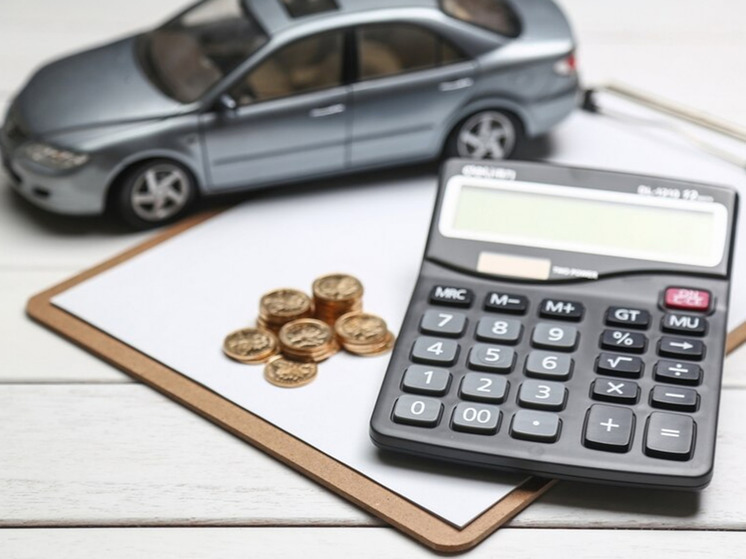Russians are ready to buy cars despite serious overpayments on interest on loans
Citizens continue to actively buy cars on borrowed money, not fearing high interest rates. In July, car loans in Russia updated their historical record: Russians took out more than 133 thousand loans for almost 200 billion rubles. The number of loans issued increased by 61% compared to the same month last year, and the volume growth was 57%. This is evidenced by data from the United Credit Bureau (UCB). MK found out from experts what is causing the rush demand for cars and how much citizens overpay when applying for car loans.

Auto loan market figures remain high for the third month in a row. And although, according to the National Bureau of Credit Histories (NBKI), in July compared to June of this year the increase was only 1.6%, in annual terms the increase is very significant. According to OKB, in the second month of summer, Russians issued over 133 thousand car loans worth more than 197 billion rubles. Compared to July 2023, the number of issues increased by 61%, and the volume by 57%. At the same time, the car loan term also increased by 9 months — from 63 months (5 years and 3 months) in July last year to 72 months (6 years) in July 2024.
There are several reasons for such high demand for cars among Russians. According to Alexey Volkov, Marketing Director of the National Bureau of Credit Histories, among other things, this is the result of the “low base” effect due to the shortage of new cars that was observed a year ago – as a result of sanctions and the breakdown of ties with Western suppliers.
But the main reason for the excitement in the car market is the upcoming increase in the recycling fee from October 1 and its expected increase in 2025. As Freedom Finance Global analyst Vladimir Chernov pointed out, its high growth rates will be factored into the final cost of the car for the consumer, so it is more economically profitable to take out a car on credit before October 1. Starting from October, the recycling fee for cars with an engine capacity of 1 to 2 liters will increase from 300 thousand to 556 thousand rubles, and next year it will already amount to 667 thousand rubles, that is, it will more than double. For the most popular models with engines from 2 to 3 liters, recycling collection will increase by approximately 47%, from the current 1.279 million rubles to 1.875 million rubles in 2025. If we also add the natural annual increase in car prices, then even at current rates it is more profitable to buy it now than to wait for their reduction in the second half of 2025 by 2-4%, which is also not yet guaranteed.
Car loans are now issued on average at rates ranging from 18.3% to 30.3%, depending on additional services, insurance, etc. What does this mean for the borrower in practice? Let’s take, for example, a car from the mass segment worth 3 million rubles on credit for 3 years at an average rate of 24% per annum. After three years, the borrower will pay the full cost of the loan in the amount of 4.24 million rubles, and the overpayment will be 1.24 million rubles. That is, over 3 years of a car loan, the borrower will overpay 41.33% of its cost — almost half, Chernov warned.
«Borrowers are ready to take out car loans at 25% and 30% per annum, turning a blind eye to the imposed useless insurance and other additional services,» says Dmitry Yanin, Chairman of the Board of the International Confederation of Consumer Societies (ConfOP). «The whole point is that they understand that the car they want to buy will soon become 300-400 thousand rubles more expensive.»
Opinions on how such a rush demand affects the lending market differ. Some analysts predict an inevitable rise in car prices, while others believe that the situation is temporary and that the car market indicators will normalize in October. Thus, according to Lyudmila Rokotyanskaya, an expert on the stock market at BCS World of Investments, the situation is unpleasant not only for the car loan market, but also for the economy as a whole. After all, the situation on the car market will contribute to the overall inflation, which the Central Bank of the Russian Federation cannot bring to a downward trajectory.
“We do not expect “overheating” and the emergence of a bubble in the car loan market,” Chernov joins the discussion. According to him, car loans are secured loans and cars remain as collateral with banks until they are fully repaid. In the event of the borrower’s bankruptcy and the impossibility of repaying the loan, the bank simply sells his movable property on the car market and reimburses its financial costs. But before that, the bank may first offer the borrower refinancing of the loan with a reduction in the size of the monthly payment on it by increasing the loan terms. In addition, from July 1, 2024, the Central Bank of the Russian Federation tightened macroprudential restrictions, which sharply reduces the risks for them. Banks are required to apply increased risk coefficients for car loans for borrowers with a high and medium debt burden. «The current excitement in the car loan market will significantly subside after October 1, 2024 and at the beginning of 2025,» the expert believes.


